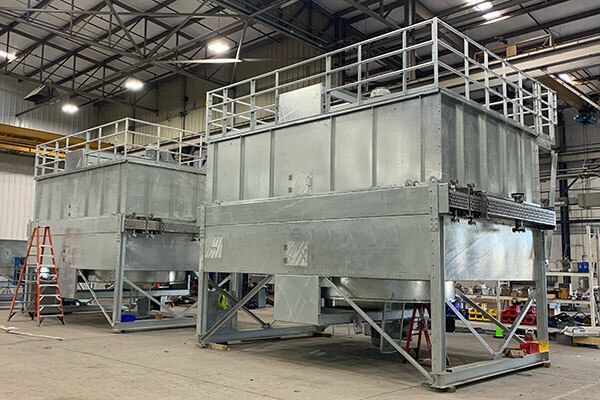Induced Draft Air-Cooled Heat Exchanger
induced Draft Air-Cooled Heat Exchanger (ID Fan ACE) in detail.
This is a common type of heat exchanger used in industrial applications to cool a process fluid (like water, oil, or a process stream) using air.
The Core Concept: “Induced Draft”
The key differentiator is in the name. “Induced Draft” means the fan is located on top of the bundle (the coil of tubes) and pulls or induces air upwards across the tube bundle.
This is the opposite of a Forced Draft design, where the fan is at the bottom and pushes air across the tubes.
How It Works: Components and Process
An Induced Draft Air Cooler consists of several key components:
- Tube Bundle: The heart of the exchanger. It consists of a series of finned tubes through which the hot process fluid flows. The fins greatly increase the surface area for heat transfer to the air.
- Axial Flow Fan(s): Located above the tube bundle. These large, slow-moving fans create a low-pressure zone, pulling air through the bundle.
- Fan Drive Assembly: This includes the motor, gearbox (if used), and drive shafts that power the fan.
- Plenum Chamber: The enclosed space between the tube bundle and the fan. It helps distribute the air evenly across the entire face of the bundle.
- Support Structure (Steel): The framework that holds the entire unit at an elevated position to allow for air entry.
- Vents/ Louvers: Often included at the air inlet to control the airflow and allow for temperature regulation.
The Process:
- The hot process fluid enters the tube bundle at one end and flows through the finned tubes.
- The induced draft fan on top pulls ambient air from the sides and bottom, drawing it upwards and across the external fins of the tubes.
- Heat is transferred from the hot fluid inside the tubes to the cooler air passing over the fins.
- The cooled process fluid exits the bundle at the other end, ready for its next use.
- The heated air is discharged vertically upwards from the top of the unit.
